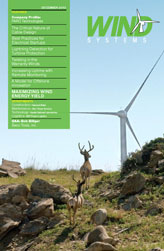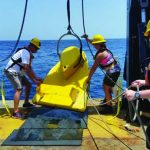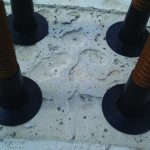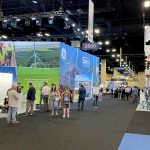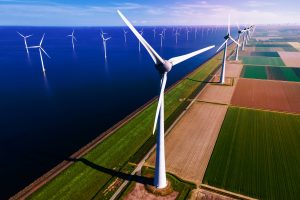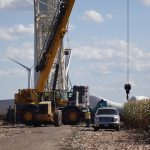The current growth of wind energy in the U.S. has been enabled by a significant number of viable land-based installations that today represents over 36 GW of installed capacity, translating to approximately 2 percent of our energy consumption. Although developers will continue to pursue economically feasible land-based sites to install projects, concerns or limitations in our transmission system, NIMBY, and limited land in most coastal states are all reasons why a strong interest has been spurred in exploiting our coastlines for offshore wind installations. There are many attractive reasons why offshore wind installations should be pursued on the Gulf coast, the Atlantic or Pacific coast, and/or the Great Lakes. The U.S. has an excellent offshore wind resource, and approximately 78 percent of our total energy consumption is consumed by the 28 states with a coastline. Currently there are no installed offshore projects in the U.S., but there are 13 projects being proposed, totaling to 2.4 GW.
Several European countries have already leveraged their coastlines for offshore projects; there are currently 39 installed offshore projects totaling over 2 GWs. Although the modern wind industry has many decades of experience the offshore wind industry is quite young, and several of the initial projects have experienced several technical premature reliability challenges since their installation. Fundamentally, offshore machines are quite similar to the land-based systems that we’ve become accustomed to, but both are driven by economic and environmental differences. Offshore machines must be equipped with systems and an operational architecture that provide accessibility and enable them to survive the challenges of the offshore environment.
From a resource perspective, it is well understood that wind over the water is often more consistent and less turbulent than on land. This typically translates to higher capacity factors and more-predictable electrical output. Coincidently, the design of the machine from the foundation to the rotor must take these differences into account, as well as the impact of the hydrodynamic loading induced by the ocean, in order to design a machine that is efficient, reliable, and cost-effective. All current offshore installations in Europe today have been installed in fairly shallow waters (<30m), which has provided the opportunity to leverage well-known foundation designs (primarily monopole) from other industries. Unfortunately, if the U.S. wants to capitalize on its vast offshore resource, research and development must be performed for deeper water depths where jacketed or floating structures will be needed.
There are many advantages as to why offshore projects should be pursued in the U.S. Outside of a key advantage of proximity to large load centers, offshore machines can be significantly larger than the typical land-based machines being installed today (1-2.5 MW) since the limitations in both infrastructure and transportation can be mitigated by having coastal manufacturing and barging the components to the installation sites. Typical offshore machines today range from 2-5 MW, but larger turbines are being designed and tested. There are several challenges associated with offshore wind, as well. In comparison to the land-based machines, the cost balance of an offshore project is not the same, as the turbine represents a much smaller percentage of the total cost (~25 percent). Cost associated with the support structure, the electrical infrastructure, and operations and maintenance (O&M) are significantly higher for offshore projects; hence why current offshore projects come in at a higher cost. To outweigh these challenges, future designs must be smarter and able to operate and report upcoming failures and service requirements prior to a catastrophic system failure. As an example, new machines could incorporate a sensor network that increases the fidelity in operation and condition health monitoring. Given that the turbine cost does not dominate the total cost of the installation as the land-based system does, innovation in this area is critical and a cost-effective way to enable reliable offshore turbines.
As we foresee a future for the wind industry where there will be offshore and land-based machines available and installed globally, it is important to acknowledge that technology innovation will continue to play a key role in making wind systems more reliable and cost-effective. As the leader of the clean energy portfolio, the wind industry must continue to find ways to improve the technology and pave the road for other upcoming technologies. It is hard to predict what the future energy picture will look like, but there is a high probability that if this industry continues to innovate, grow, and lead, it will have a key role in our energy future.
















